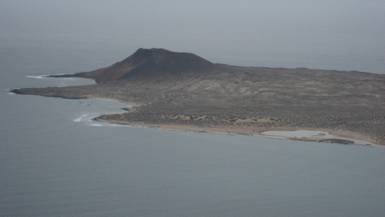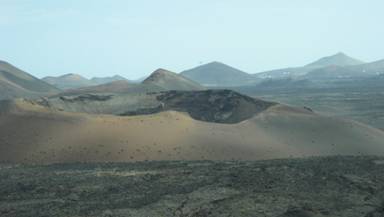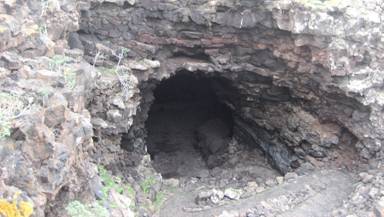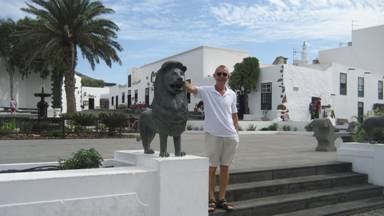Gran Tarajal, Fuertaventura

|
The attraction of a lively marina with electricity and the internet proved too much for us and we stayed in Rubicon Marina for 6 days altogether. Apart from sheer inertia we also wanted to see the island, so we hired a car for the day on Friday and drove from one end of it to the other as well as taking the opportunity for a bigger stock up at a supermarket en route back to base. We did the bus tour of the incredible lava fields created by six years of eruptions in the 18th century which covered one quarter of Lanzarote. We also visited the lookout “Mirador del Rio” which sits high up at the northern end of the island and gives you a terrific view over to our first Canarian landfall of La Graciosa. We had lunch in the charming old capital of Teguise and could have stayed longer wandering around its attractive and very peaceful lanes and squares. We were fascinated by the local method of coaxing crops from an island where it hardly ever rains and awed by the effort that it involves. Everything is grown behind low stone walls in close ranks or in semicircles to provide shelter from the wind and capture moisture from the dew and then covered in vocanic ash to provide a mulch. In the past the slopes of the old volcanoes were also extensively terraced, but of course tourism now represents a much less arduous way to earn a living. On the whole we were impressed with the way Lanzarote has managed to retain its character and limit the uglier effects of mass tourism, quite an achievement considering it has one and a half million visitors a year. (Left) Looking down on our anchorage on La Gaciosa & (right) the remains of an 18th century eruption:
(Left)the end of a lava pipe and (right) the main square at Teguise:
We headed south again on Sunday and managed to sail for the first hour or so in light breezes before we ground to a halt and had to motor the rest of the 45nm to Gran Tarajal on Fuerteventura. The coastline was interesting in a bleak way – looking a bit like Scottish highlands with the heather replaced by… nothing, just bare volcanic surfaces and lava flows. The tiny port here boasts a small marina which has got everything you need really for a very reasonable £12 a night. Just like Rubicon, the swell which seems so innocuous at sea surges around and makes the boat jerk around at the ends of its mooring lines. The town is the most genuinely “Spanish” we’ve visited since leaving northern Spain and we enjoyed joining the locals for their Sunday evening paseo (promenade). |



